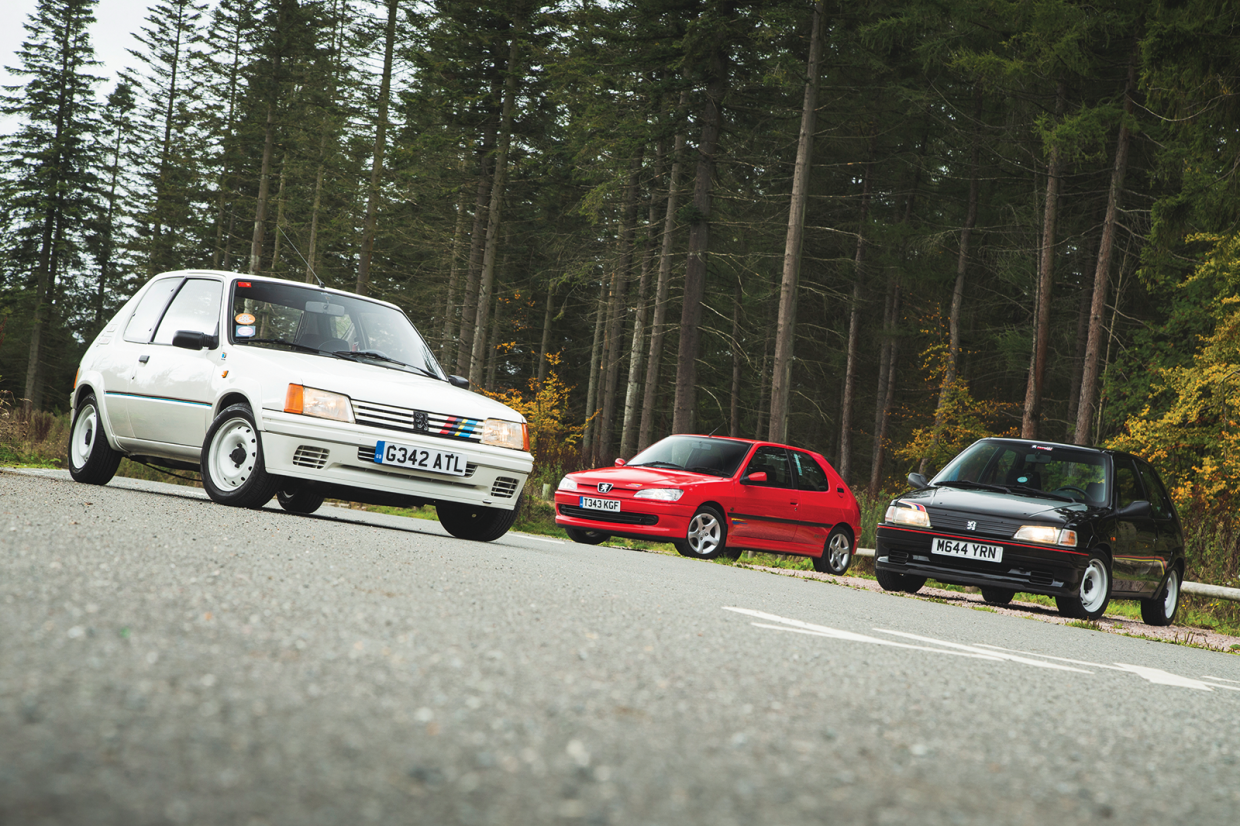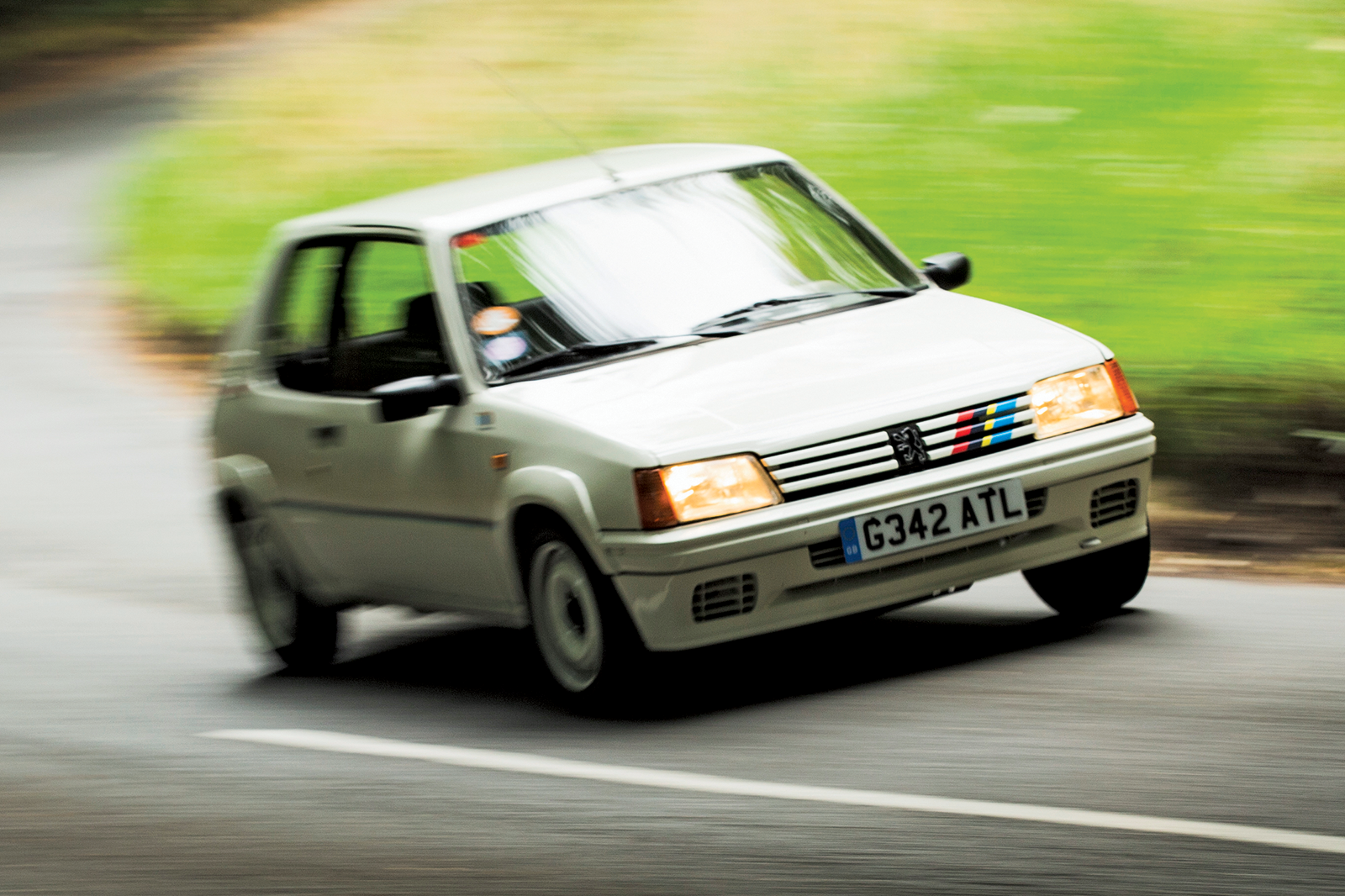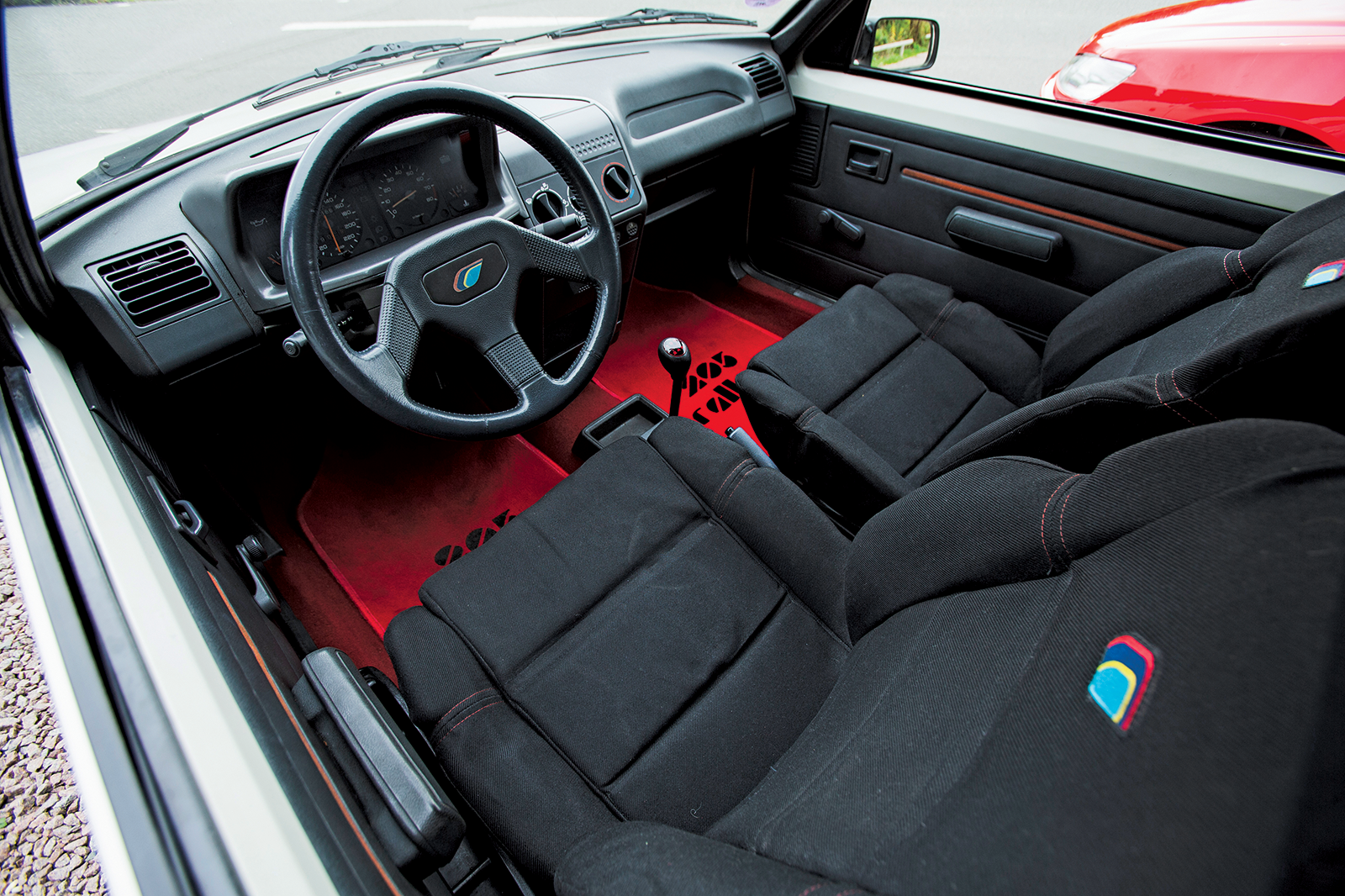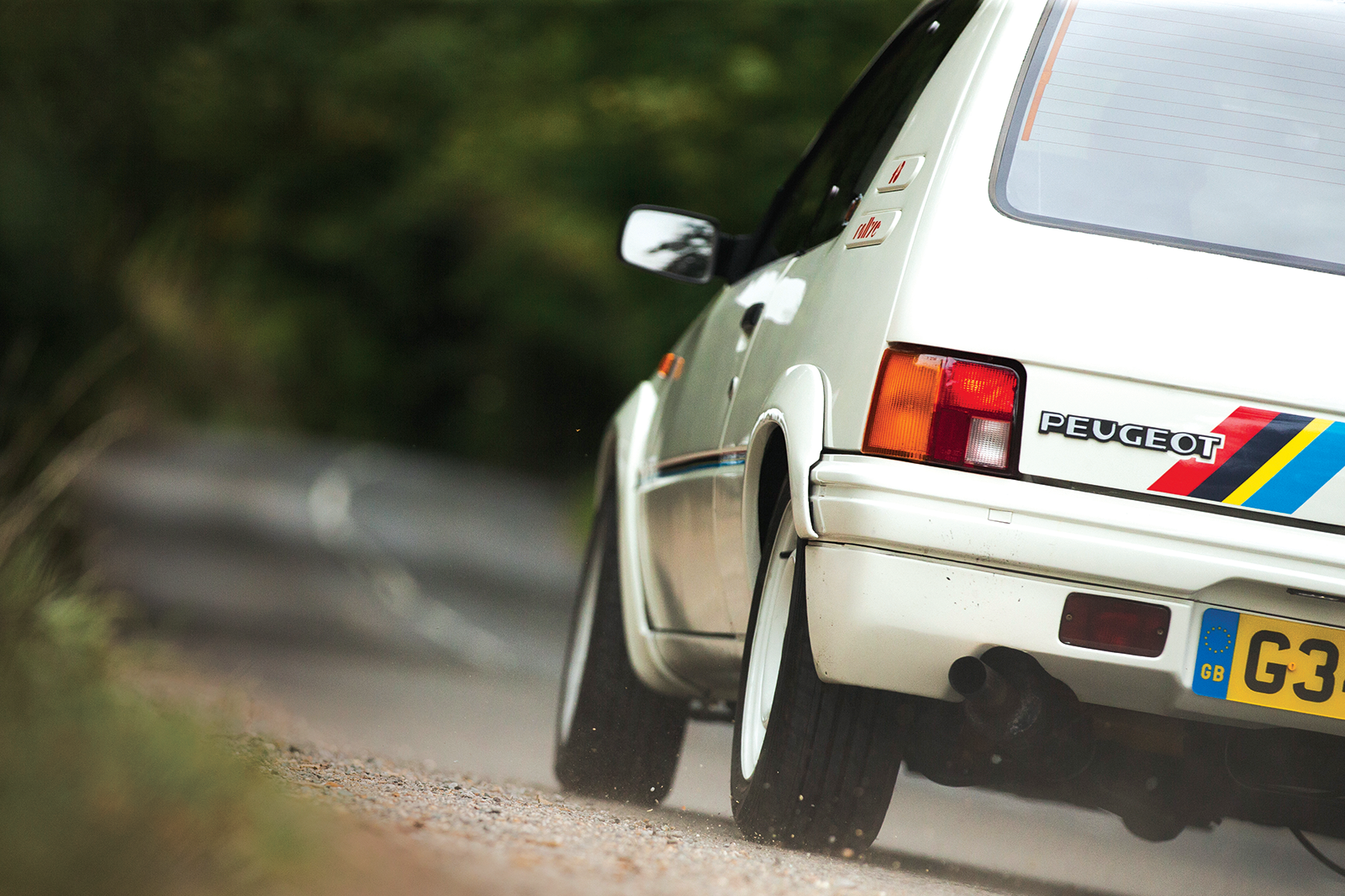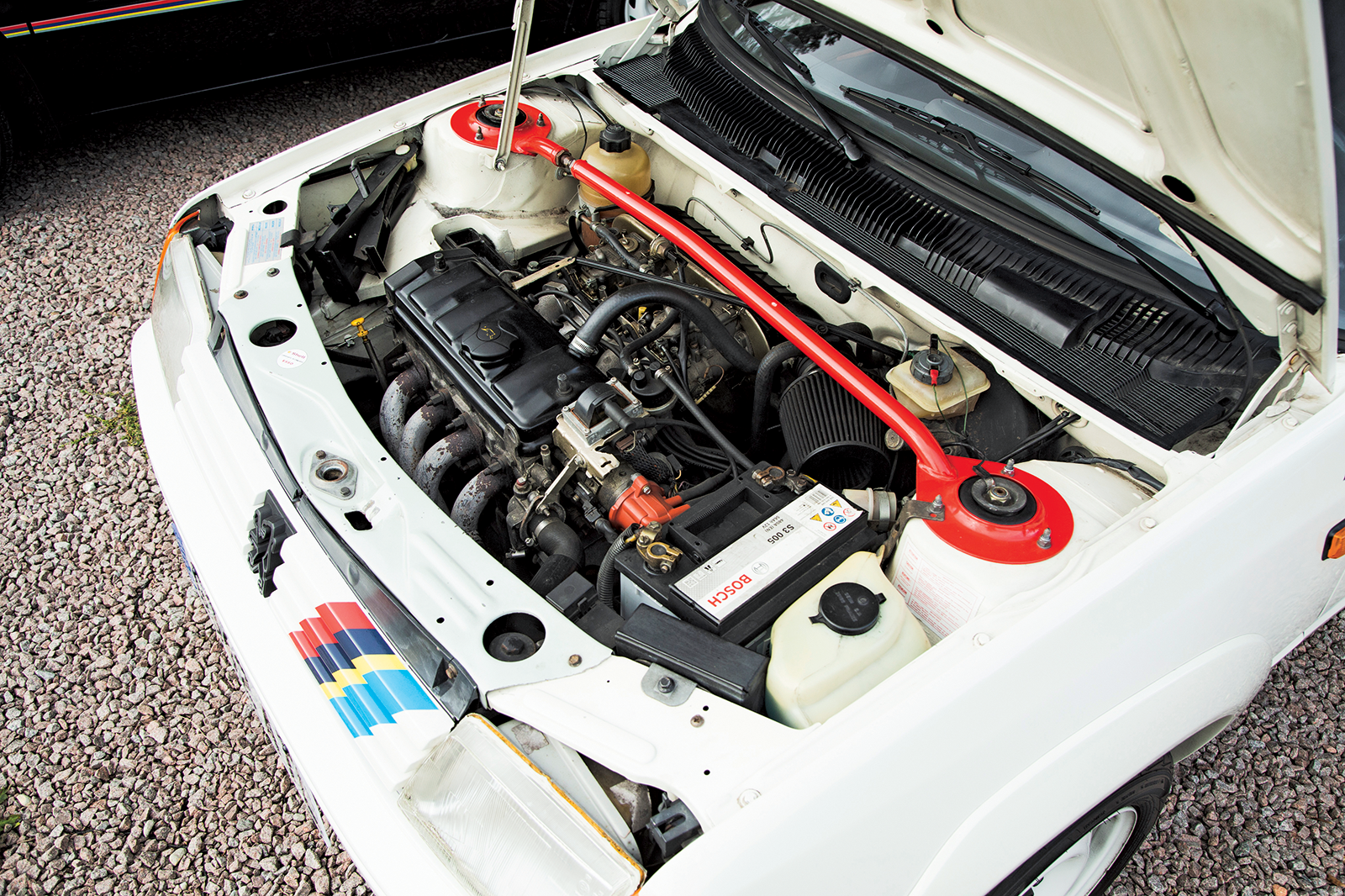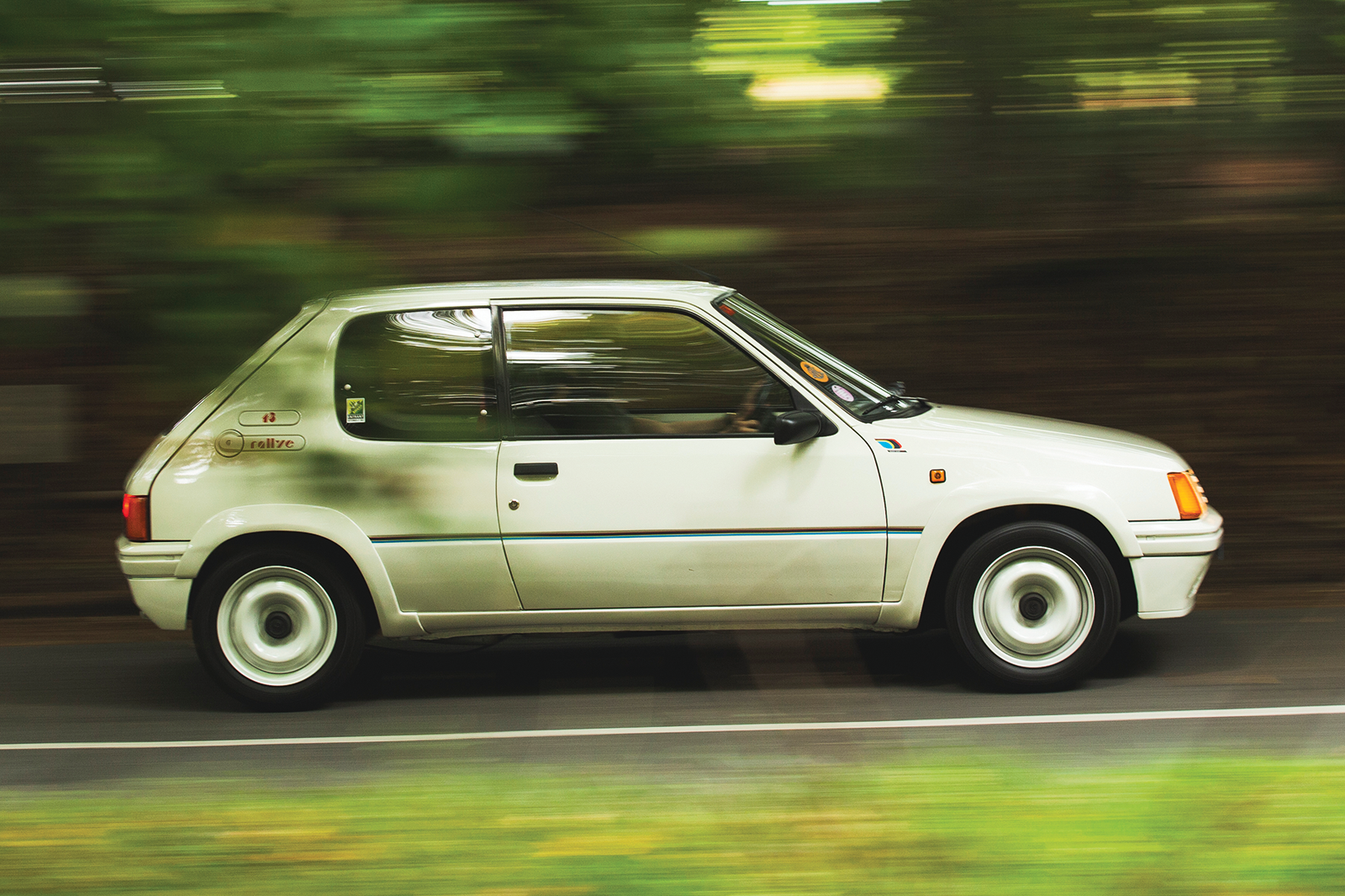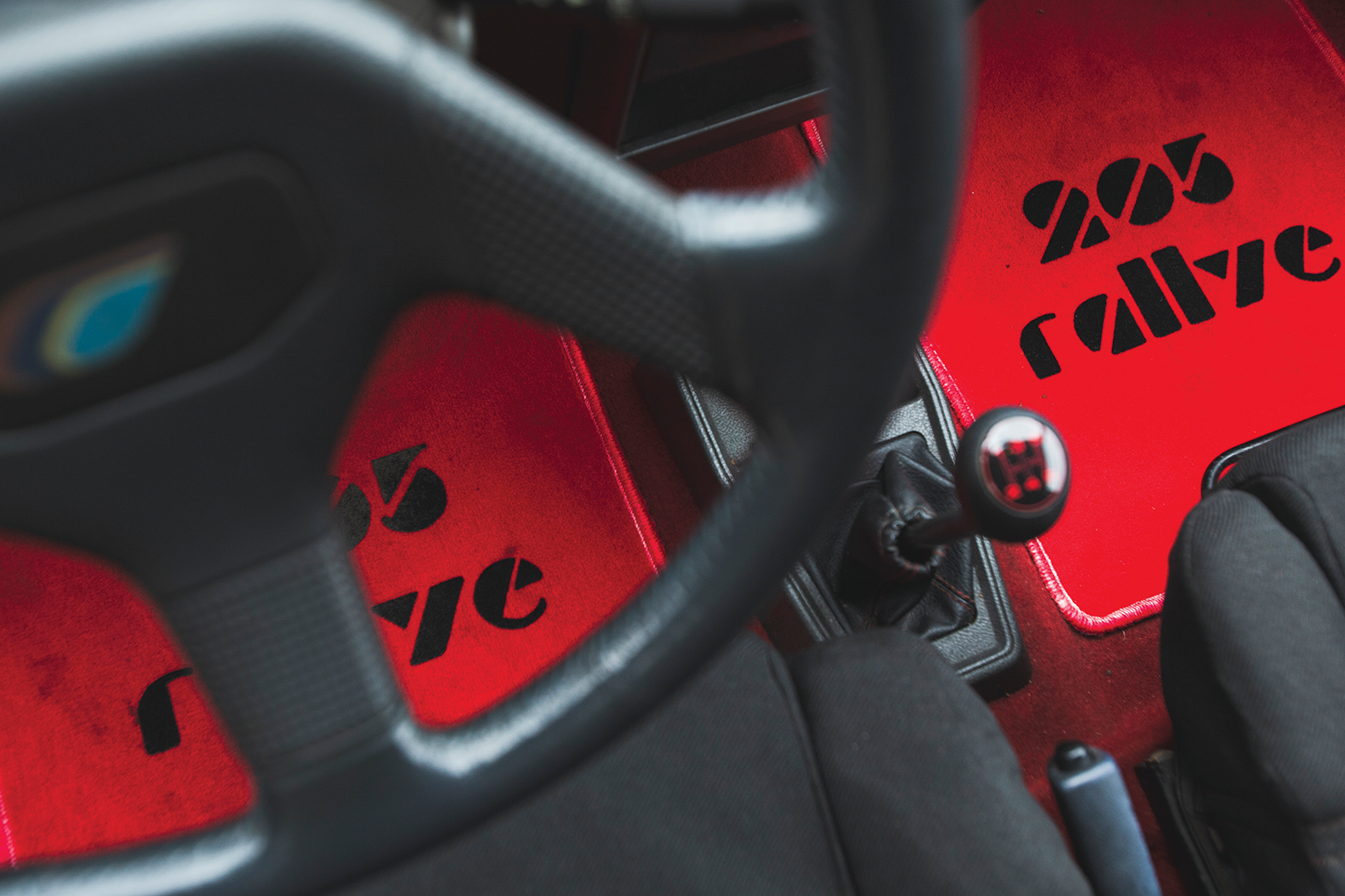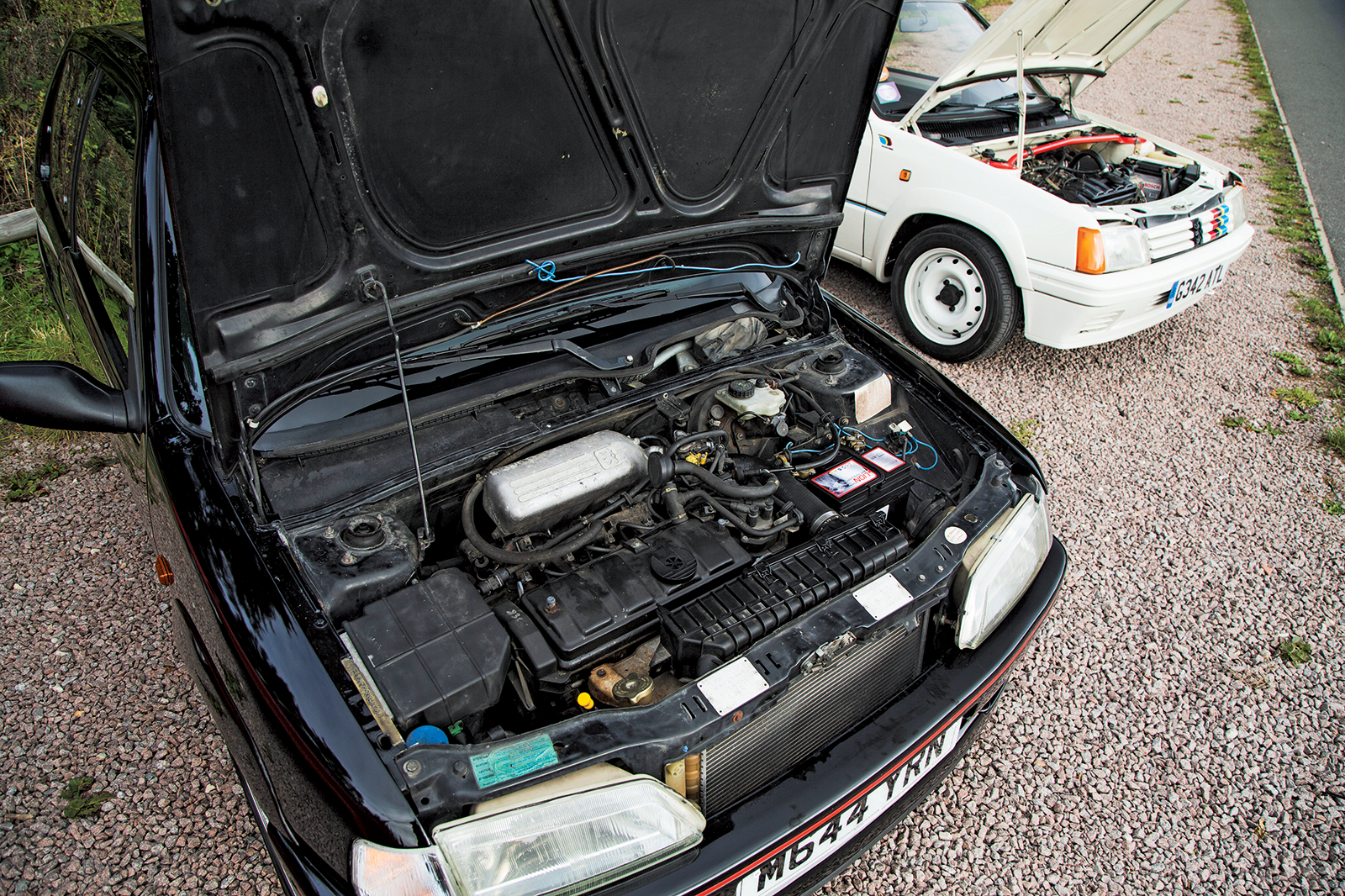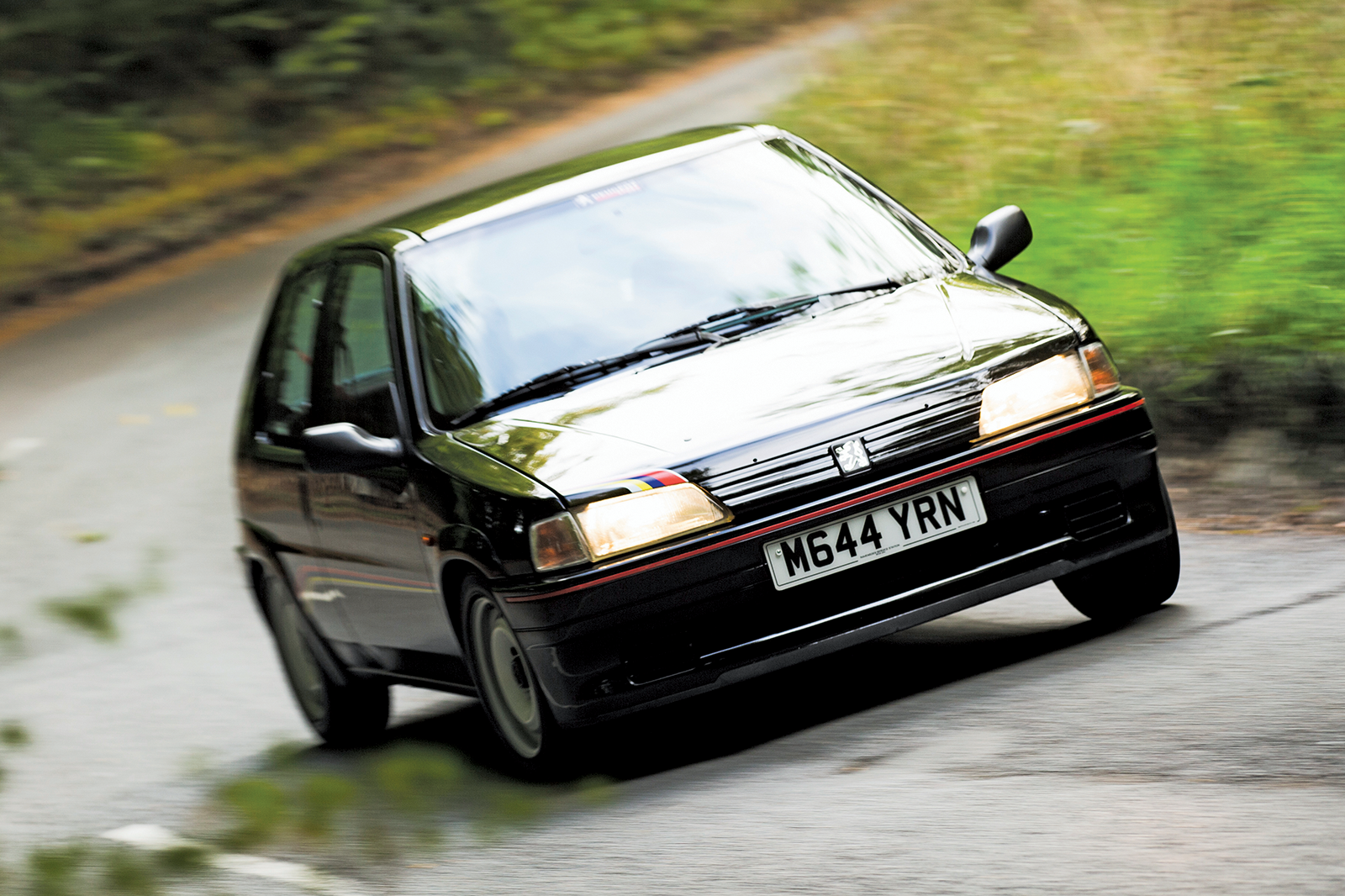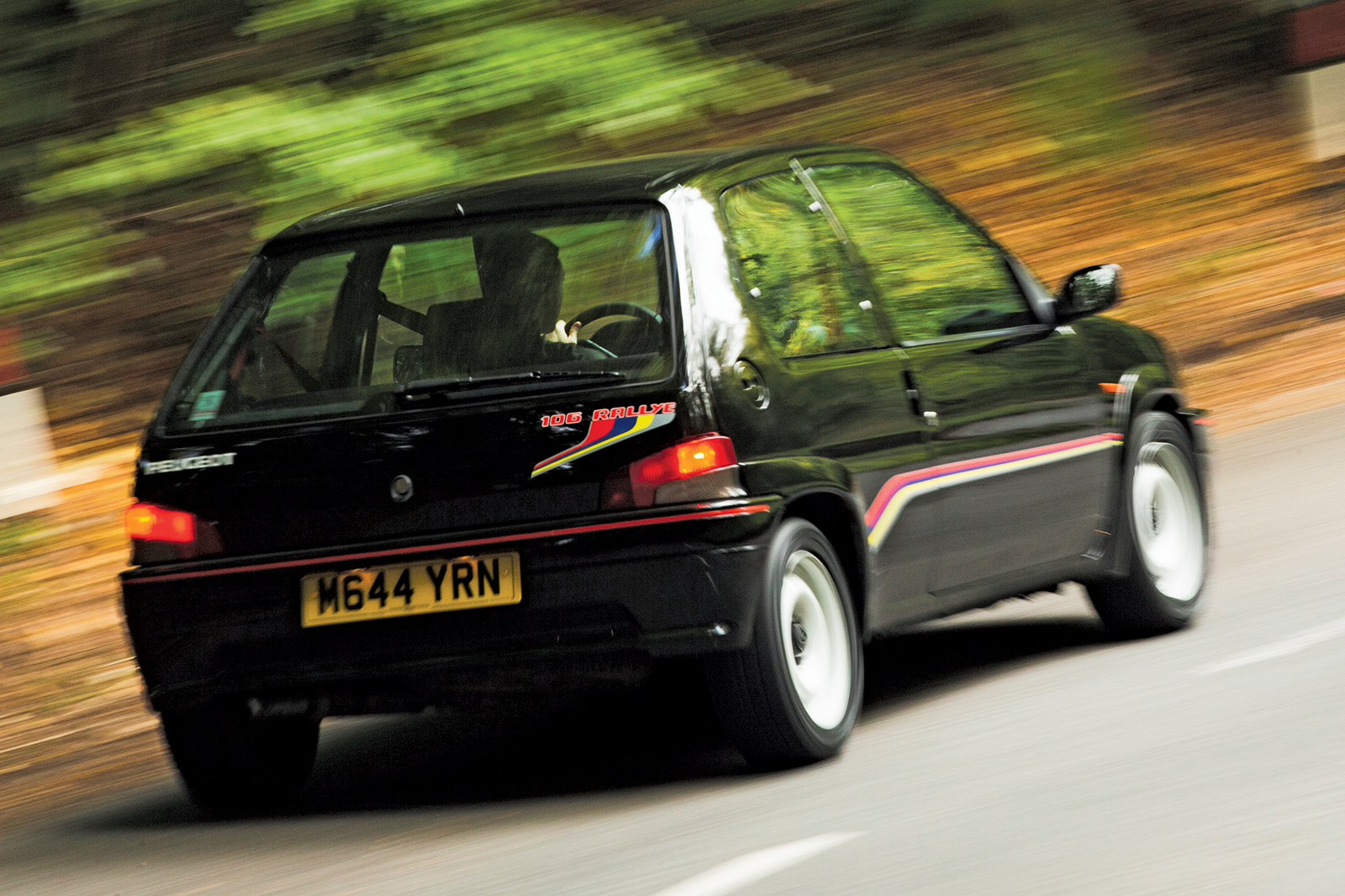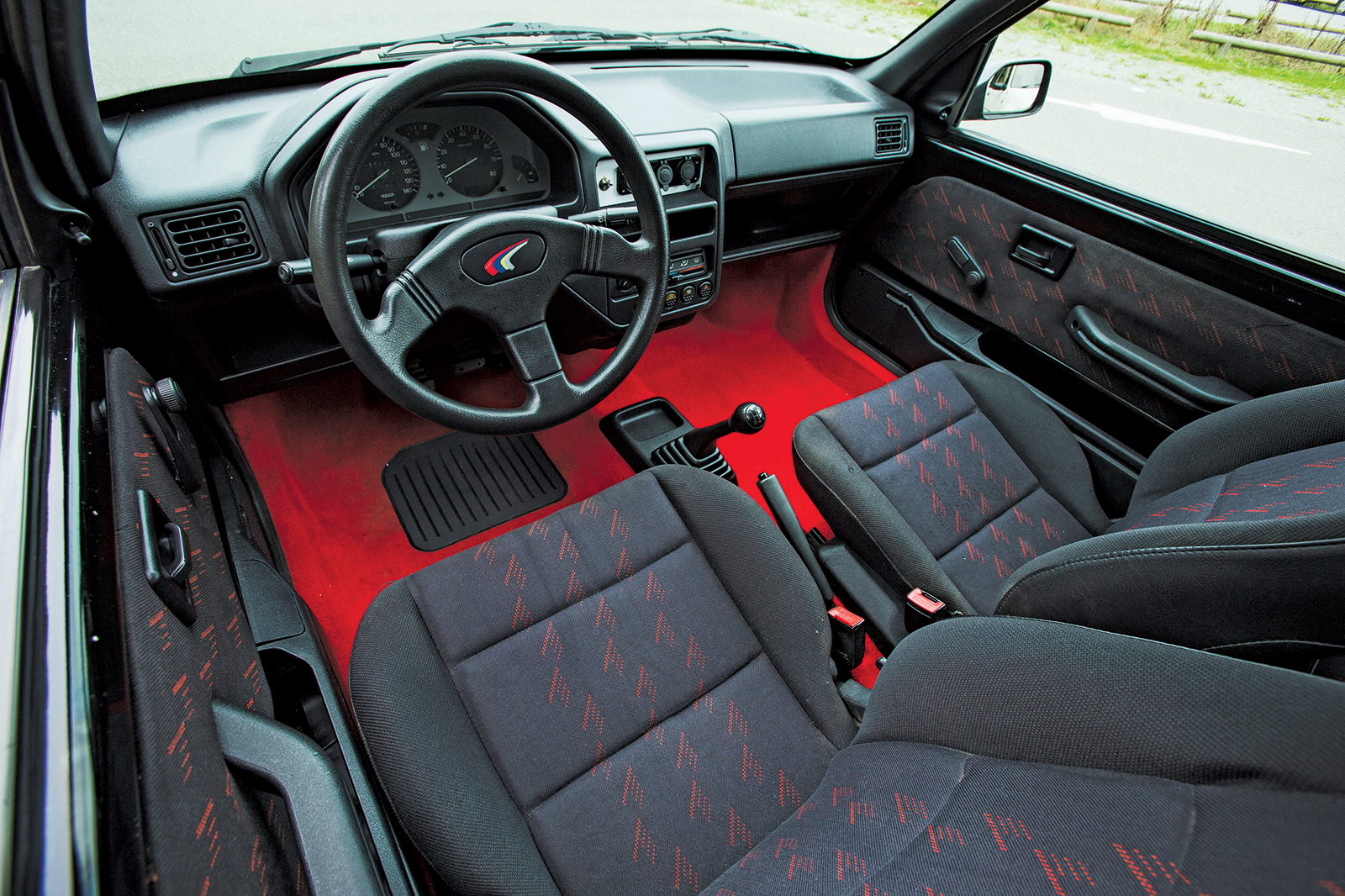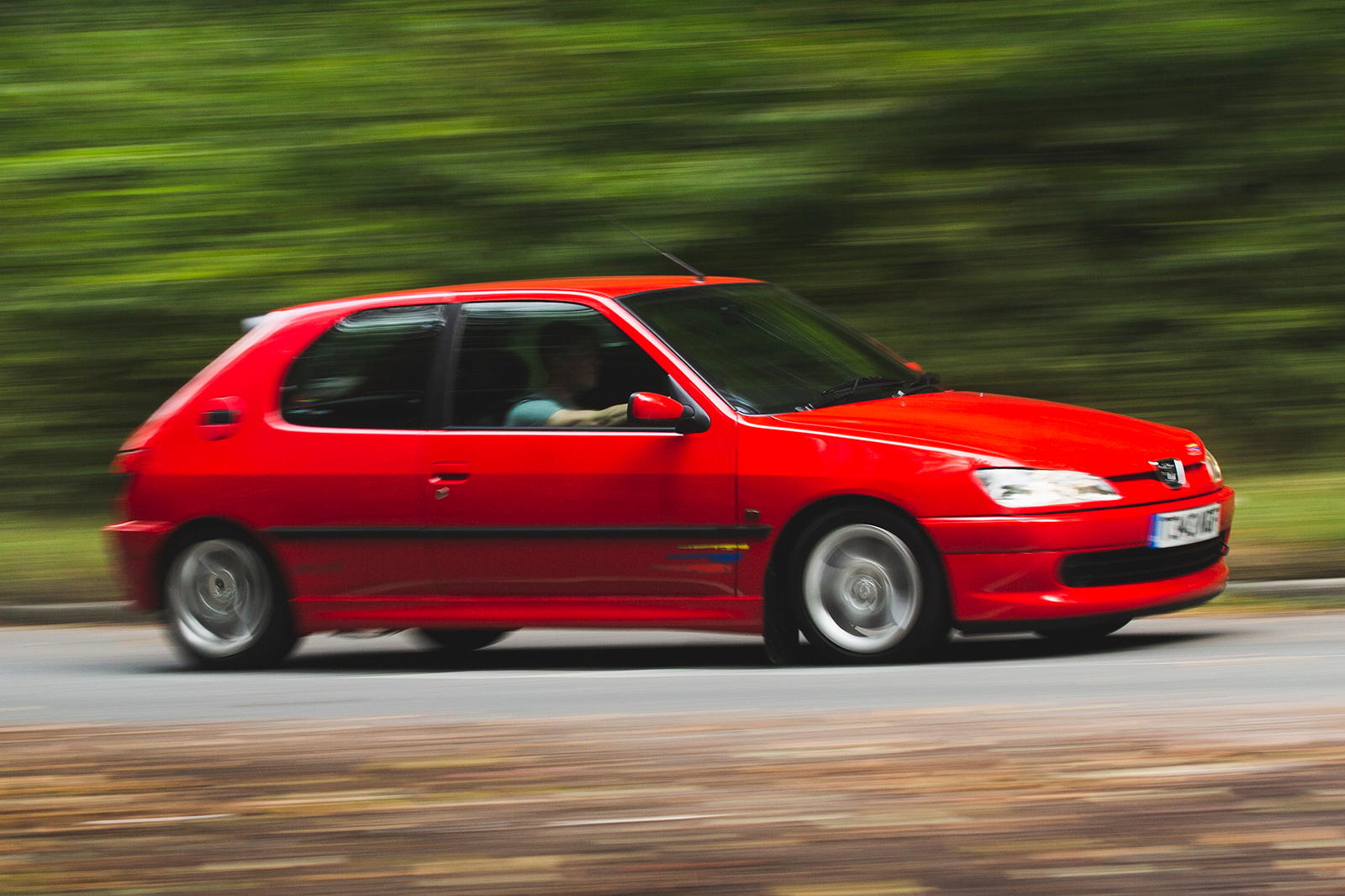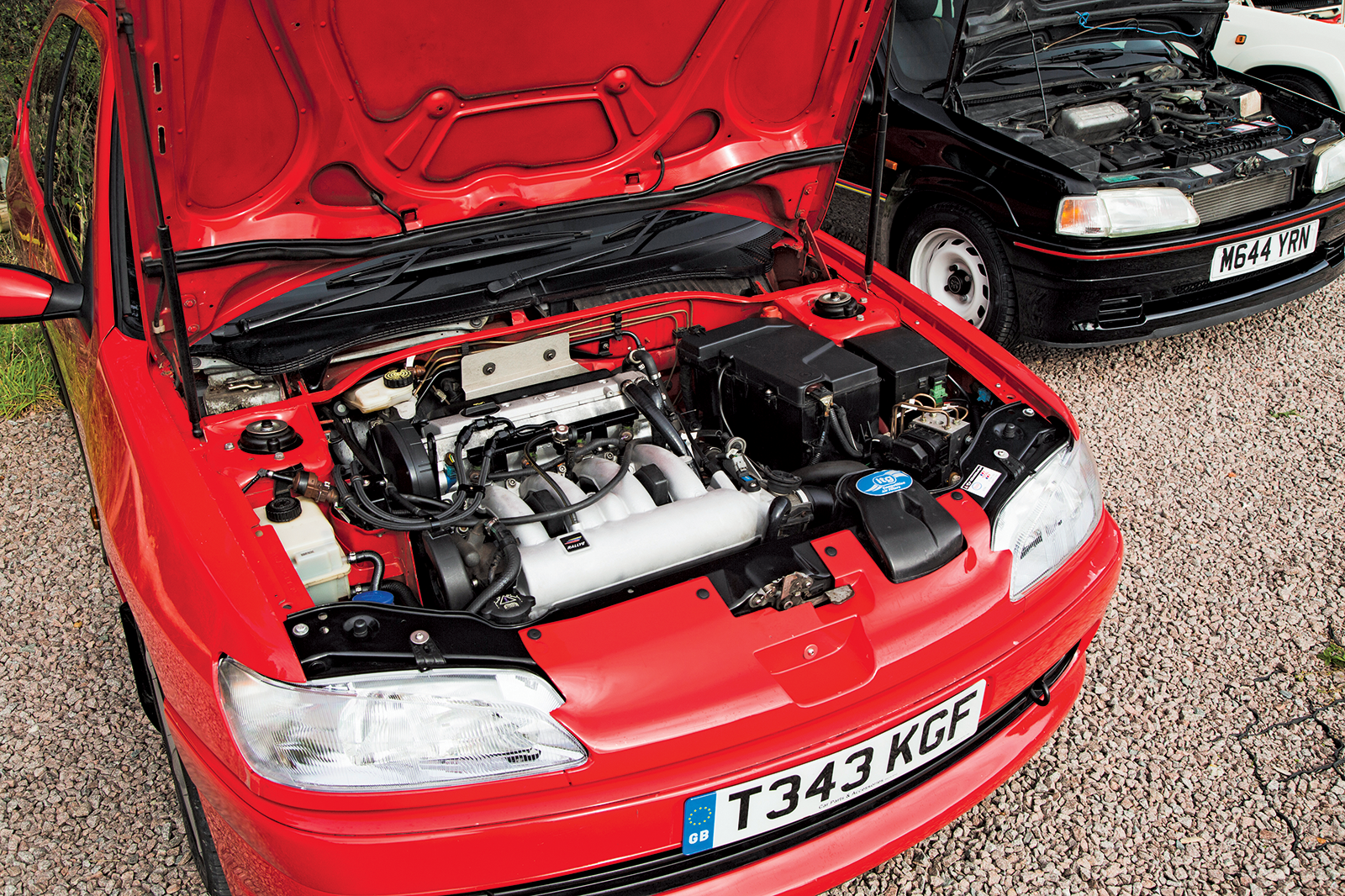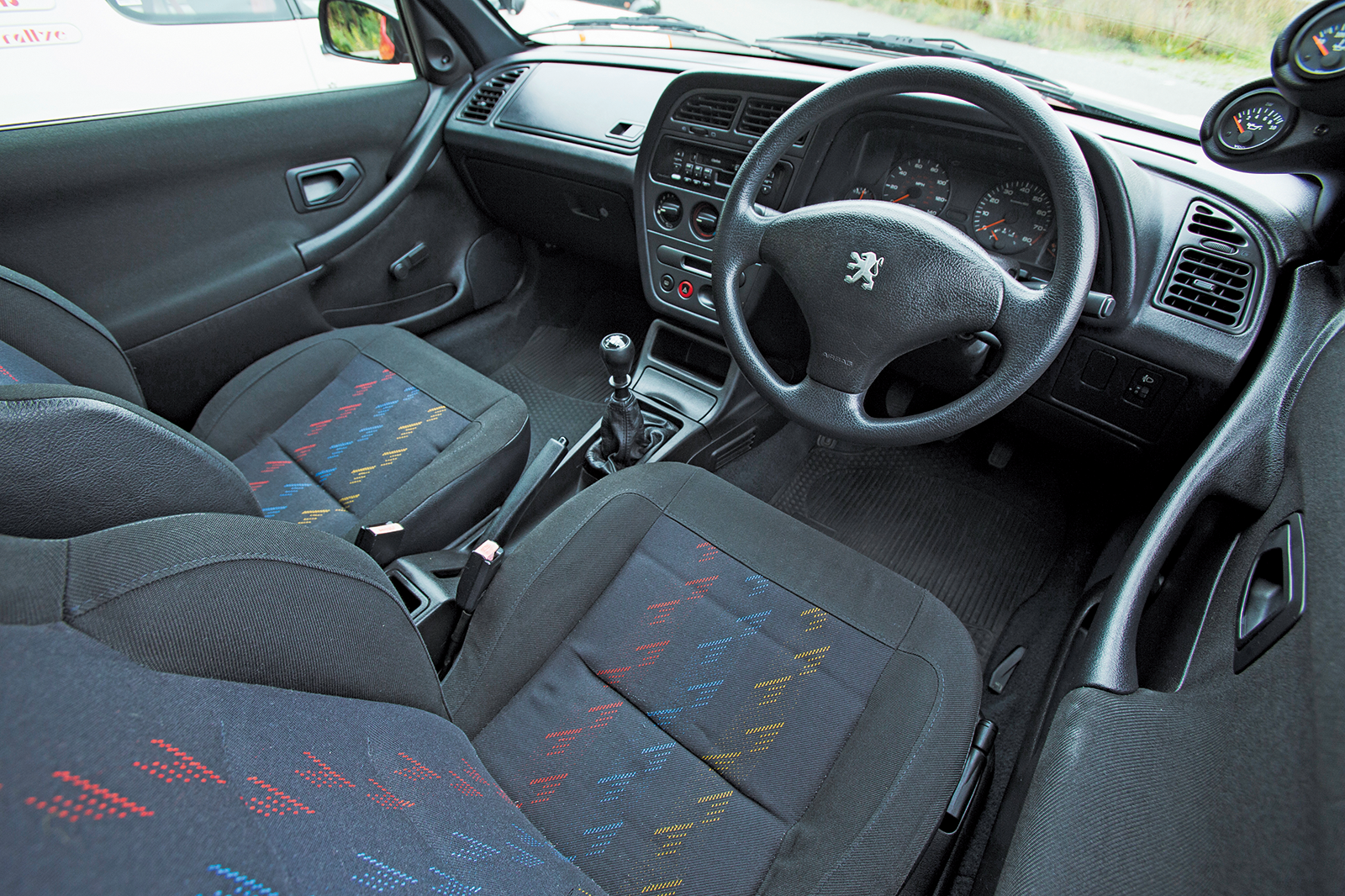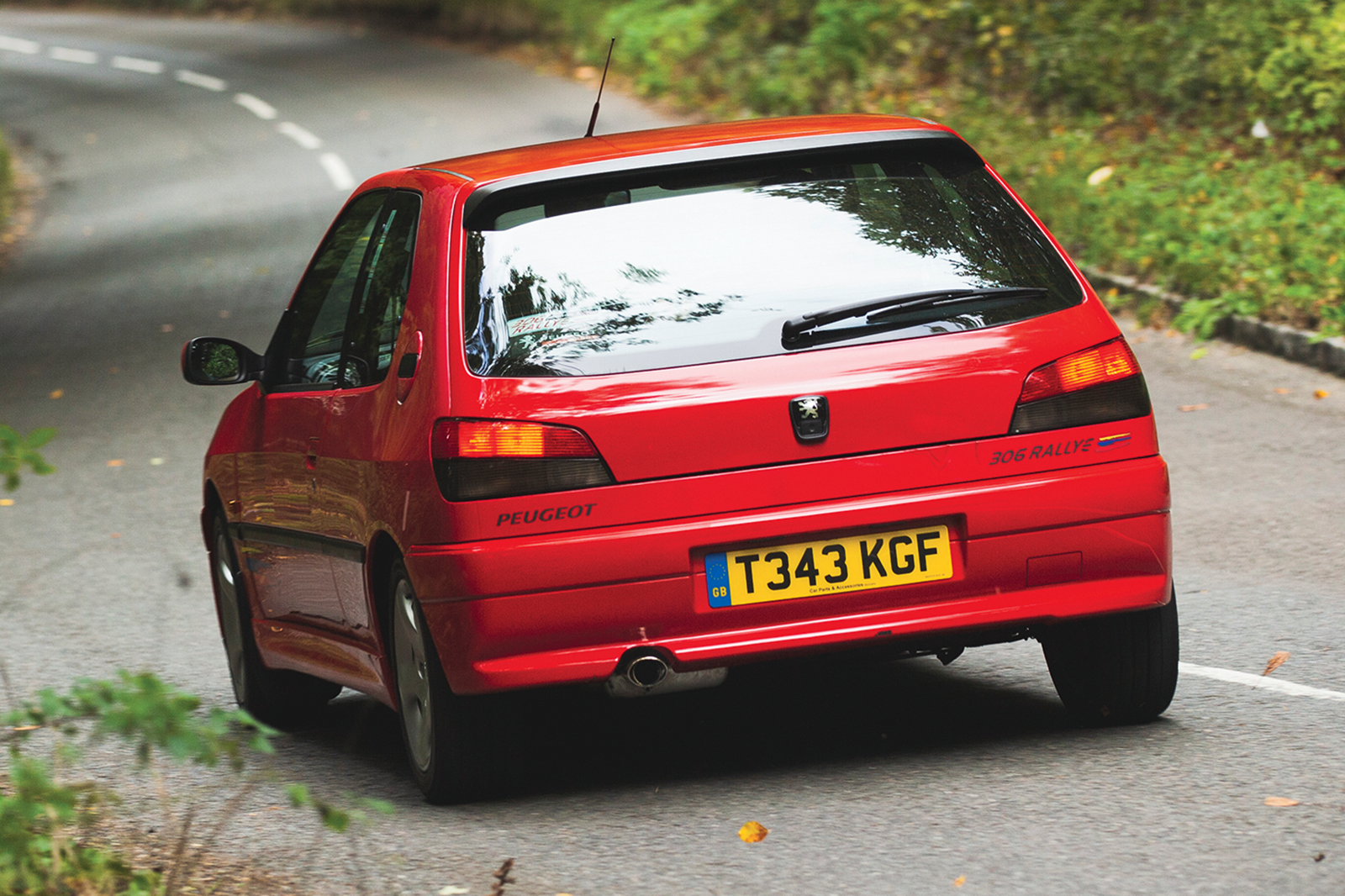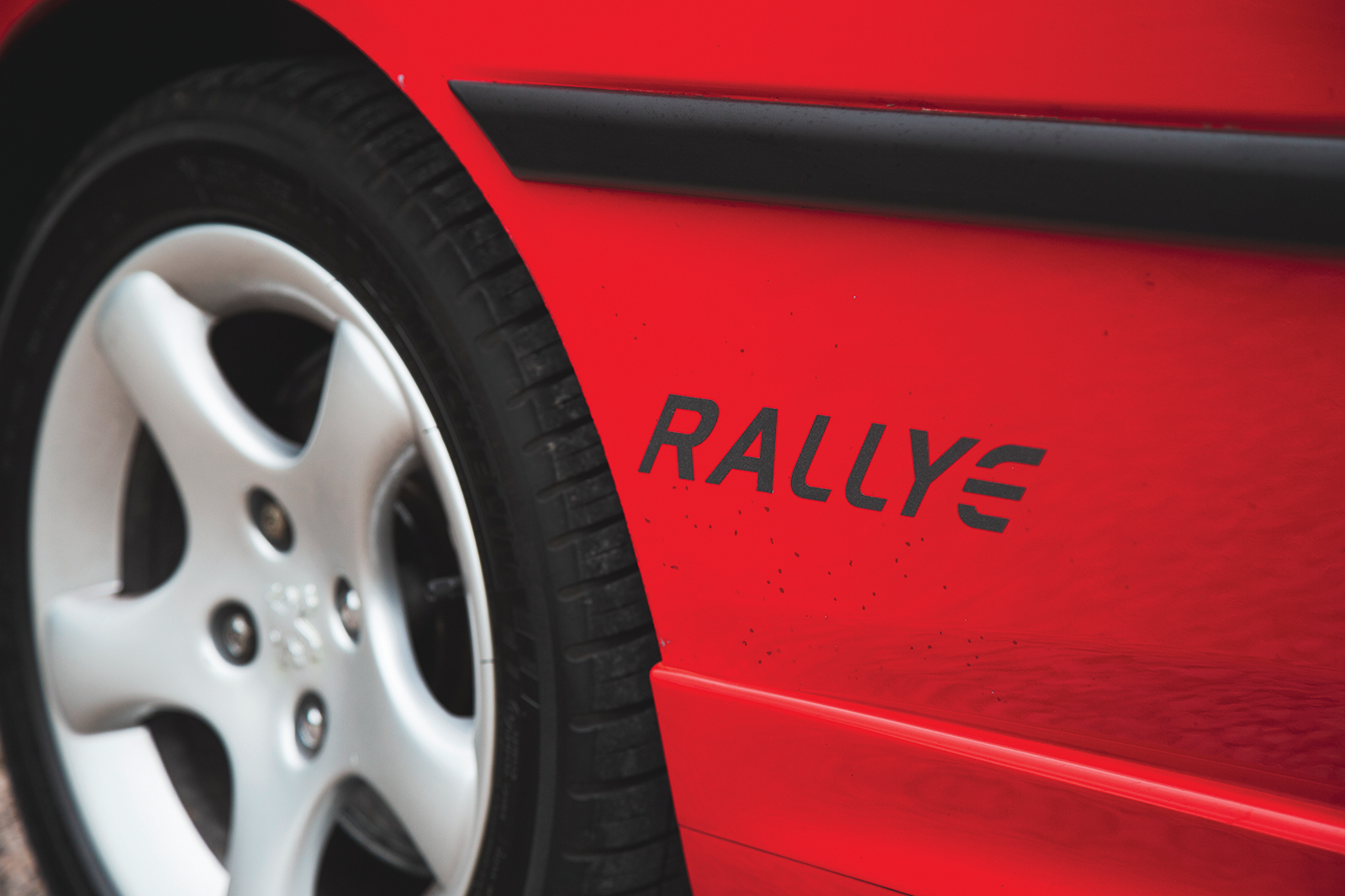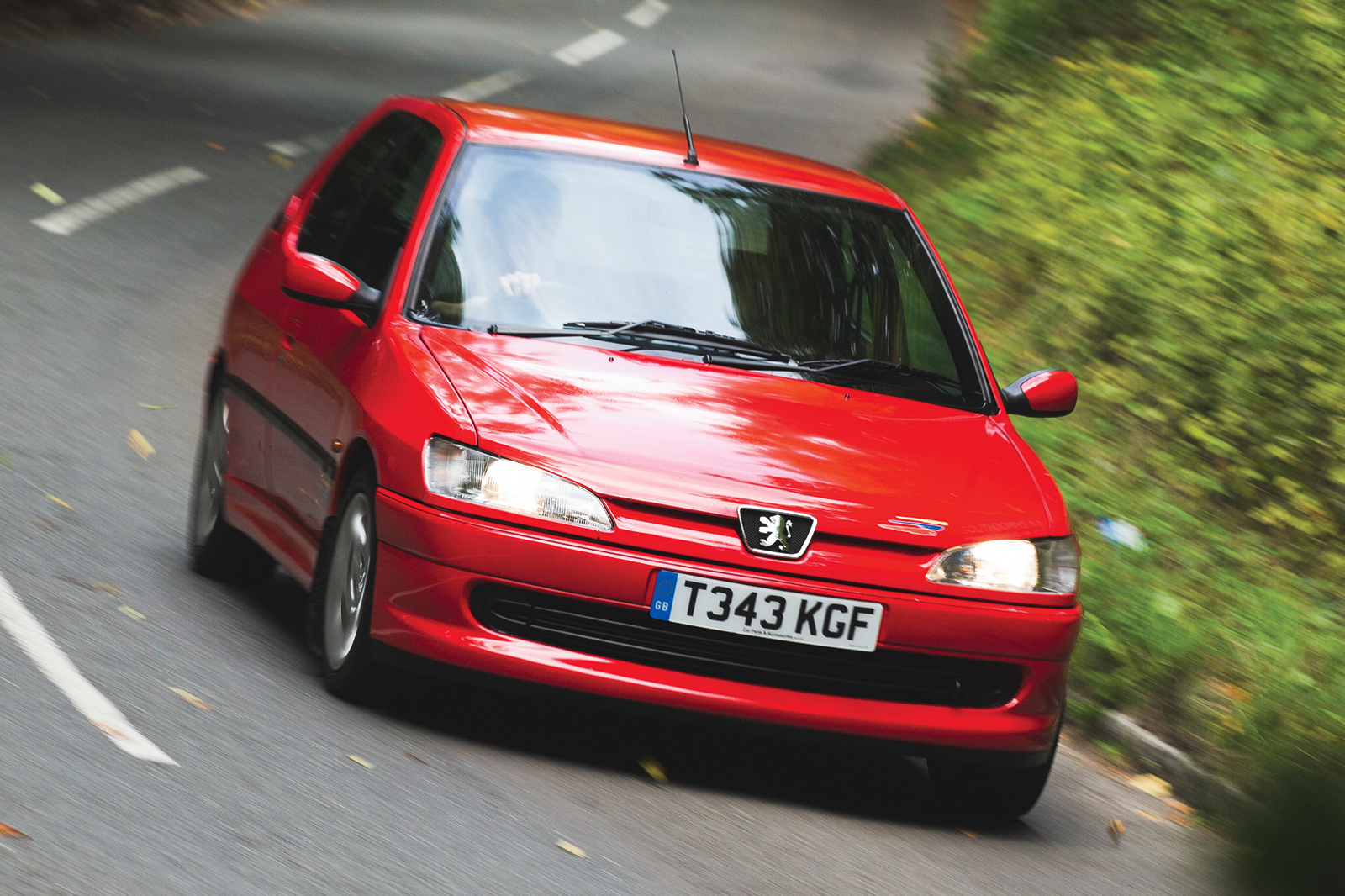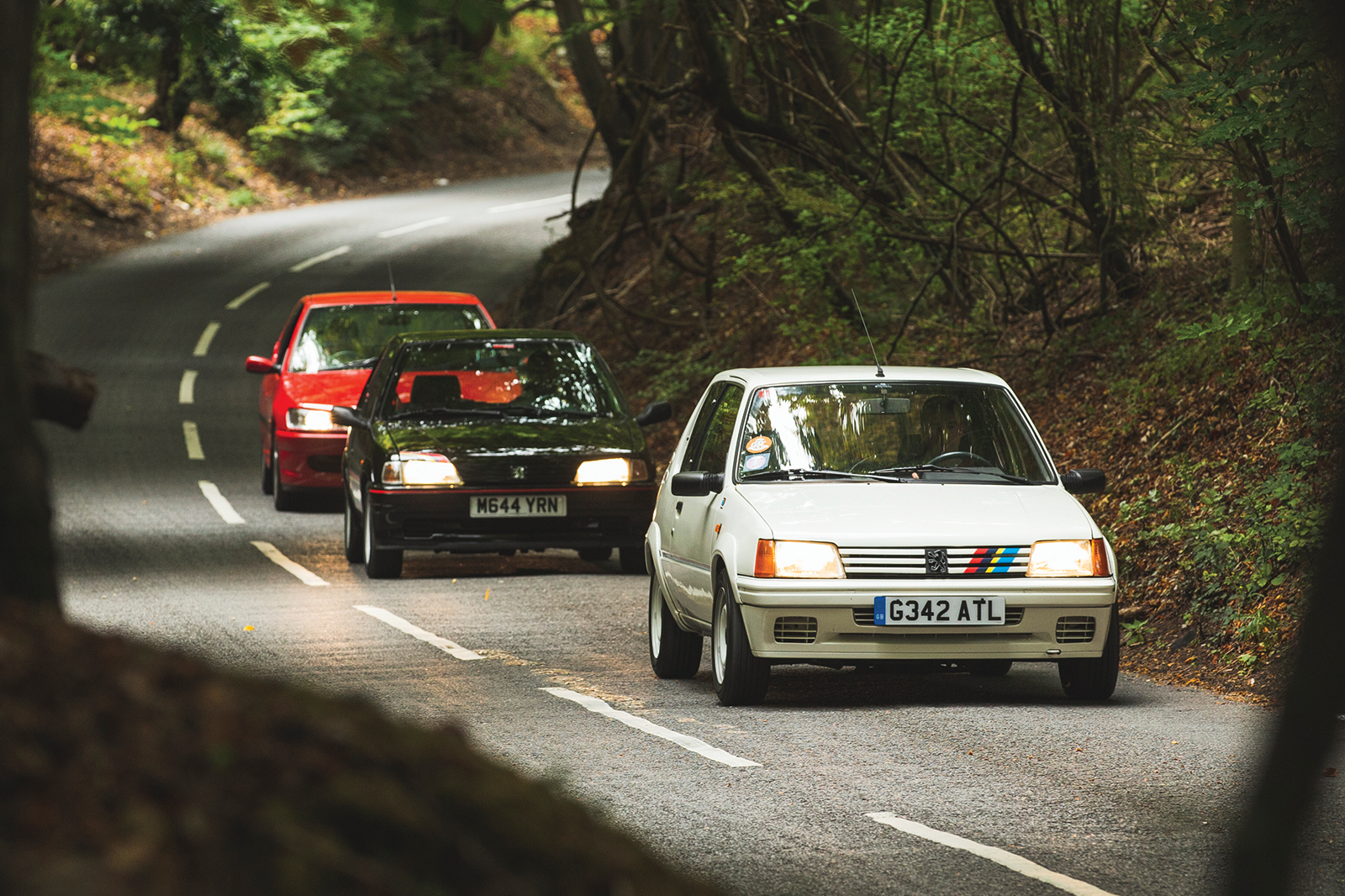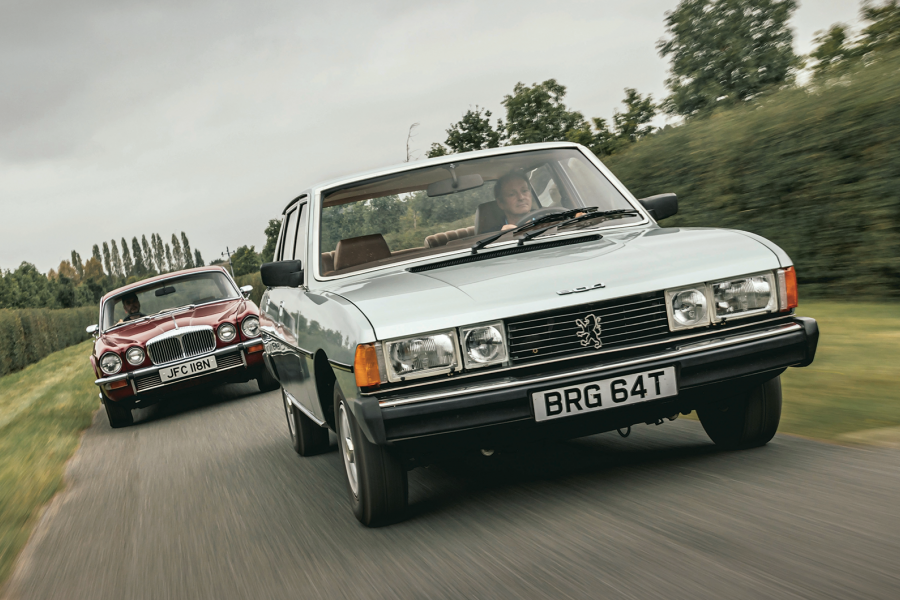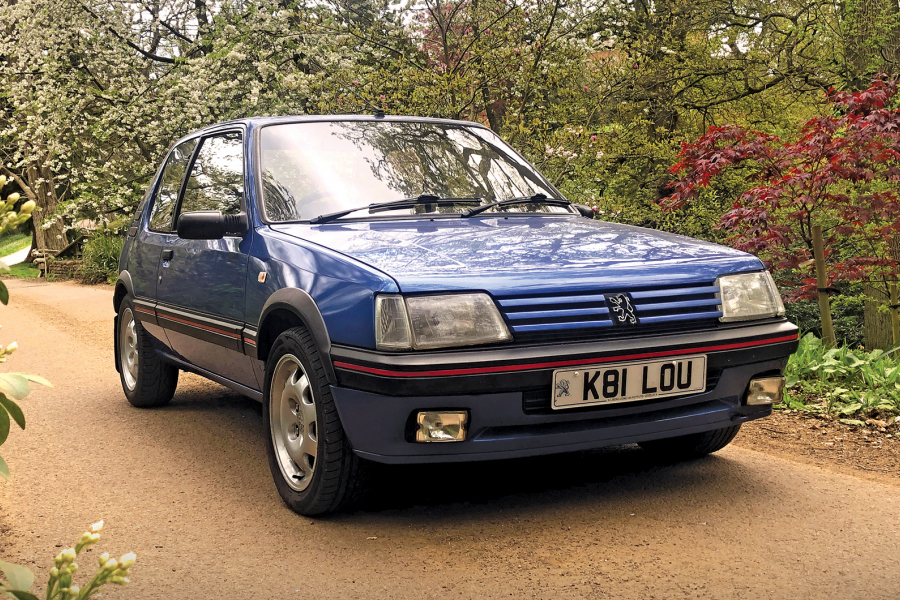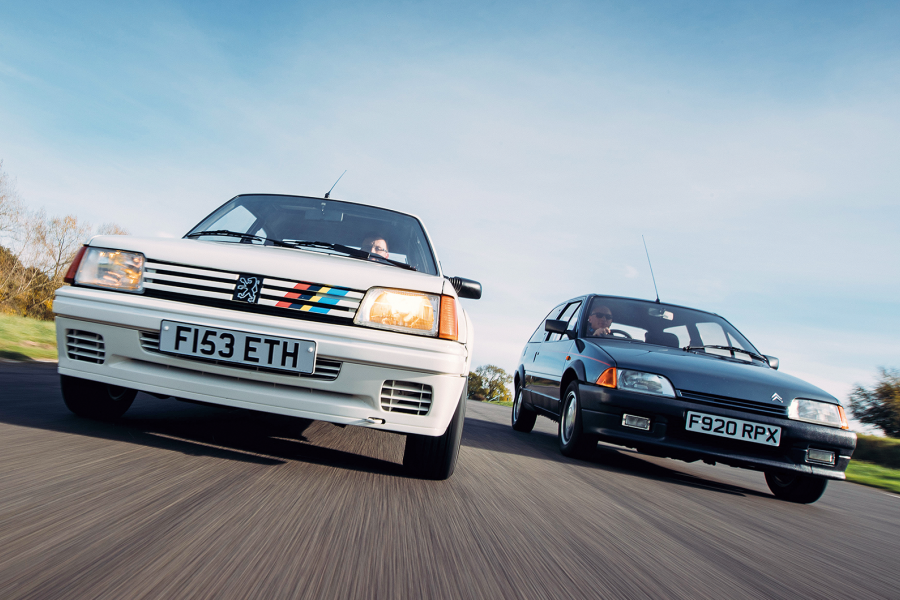Just 500 306 Rallyes were made, and the changes were few.
Steelies were swapped for Cyclone alloys on the Peugeot 306 Rallye
Apart from a weight-saving regime – removing the air conditioning, electric windows, 60:40 split rear seats and some sound deadening, for a total of 65kg – a standard GTI-6 remained underneath.
That meant the ubiquitous XU engine in 2-litre, 16-valve form making a healthy 167bhp; the later six-speed gearbox; and Peugeot’s trick passive-steer rear axle, the latter playing a big part in making this arguably the finest-handling hatchback of its time.
It would prove itself on the rally stages, although not as a full participant in the WRC, as the wild 306 Maxi.
The 306 Rallye’s dark interior is less inspiring than its predecessors’
Sadly, there was no meaningful roadgoing relation to the Maxi, but the Rallye was still a lively option for the enthusiast, with the usual PTS colour options and for a considerable £2695 lower list price than a standard GTI.
This red 306 Rallye was Tom Collins’ daily driver when he bought it in 2018, but it has graduated to cherished status – a fate now dawning on the other 89 examples remaining on UK roads (compared with around 40 205 Rallyes and more than 100 106s).
“I learned to drive in a 306, and this is our fifth one – after a bit of a break due to a growing family,” says Tom.
‘This is clearly a larger car with a role beyond simply firing a Peugeot badge as fast as possible along a challenging route’
“When we decided we needed a second car, this was the ultimate way back into Peugeot ownership,” he says.
For Tom, the joy of the 306 is that it has proved just as effective at shows and on Sunday drives as late-for-work commutes.
From the taller driving position to the way the 306 Rallye deftly, but detectably, manages its weight down a twisting, bumpy road, this is clearly a larger car with a role beyond simply firing a Peugeot badge as fast as possible along a challenging route.
Minimalist badging on the Peugeot 306 Rallye
Its rolling refinement is well above the others, there are decent rear seats and, relatively speaking, long-striding gear ratios.
But while it doesn’t buzz, it does growl, and surges forward on a keen thrust of mid-range torque.
It also displays a delicate, very front-drive, nose-pinned balance that, even more than its predecessors, is happy to tail-wag its way around corners with rally-style theatricals.
There’s a spirit in here of the early cars that we’re 65kg closer to reaching, but you can’t help but feel that another 65kg really would bring this Rallye to life.
Fewer than 100 Peugeot 306 Rallyes remain on UK roads
Others would take up that baton, though, such as Renault’s ultimate niche-market filler, the Clio 182 Trophy.
It’s a shame Peugeot faded into the mists of hot-hatch time so soon after the 306 Rallye, leaving it as a sort of date stamp of legends past.
Here also was the end of the special-stage sellers, an era when hot hatches proved their mettle, earned their reputations and wore their war stripes with pride.
Images: Luc Lacey
Thanks to: Peugeot Sport Club UK
Factfiles
Peugeot 205 Rallye
- Sold/number built 1988-’92/30,111
- Construction steel monocoque
- Engine all-alloy, sohc, 8v 1294cc ‘four’, twin Weber carburettors
- Max power 102bhp @ 6800rpm
- Max torque 89lb ft @ 5000rpm
- Transmission five-speed manual, FWD
- Suspension: front independent, by MacPherson struts rear beam axle, trailing arms, torsion bars, telescopic dampers; anti-roll bar f/r
- Steering rack and pinion
- Brakes discs front, drums rear, with servo
- Length 12ft 1⅞in (3705mm)
- Width 5ft 1⅞in (1572mm)
- Height 4ft 5½in (1360mm)
- Wheelbase 7ft 11¼in (2420mm)
- Weight 1742lb (790kg)
- Mpg 35
- 0-60mph 9.6 secs
- Top speed 118mph
- Price new Ffr69,800 (£9367)
- Price now £10-20,000*
Peugeot 106 Rallye
- Sold/number built 1993-’98/16,500 (c1000 UK cars)
- Construction steel monocoque
- Engine all-alloy, sohc, 8v 1294cc ‘four’, electronic fuel injection
- Max power 100bhp @ 7200rpm
- Max torque 81lb ft @ 5400rpm
- Transmission five-speed manual, FWD
- Suspension: front independent, by MacPherson struts rear beam axle, trailing arms, torsion bars, telescopic dampers; anti-roll bar f/r
- Steering rack and pinion
- Brakes discs front, drums rear, with servo and anti-lock
- Length 11ft 8¼in (3564mm)
- Width 5ft 3¼in (1605mm)
- Height 4ft 4⅜in (1330mm)
- Wheelbase 7ft 9⅞in (2385mm)
- Weight 1786lb (810kg)
- Mpg 35
- 0-60mph 10.6 secs
- Top speed 116mph
- Price new £8995
- Price now £5-10,000*
Peugeot 306 Rallye
- Sold/number built 1998-’99/500
- Construction steel monocoque
- Engine iron-block, alloy-head, dohc, 16v 1998cc ‘four’, electronic fuel injection
- Max power 167bhp @ 6500rpm
- Max torque 145lb ft @ 5500rpm
- Transmission six-speed manual, FWD
- Suspension: front independent, by MacPherson struts rear beam axle, trailing arms, torsion bars, telescopic dampers; anti-roll bar f/r
- Steering rack and pinion
- Brakes discs, with servo and optional anti-lock
- Length 13ft 2⅝in (4030mm)
- Width 5ft 6⅝in (1692mm)
- Height 4ft 6¼in (1380mm)
- Wheelbase 8ft 5½in (2580mm)
- Weight 2564lb (1163kg)
- Mpg 30
- 0-60mph 7.8 secs
- Top speed 130mph
- Price new £15,995
- Price now £5-10,000*
*Prices correct at date of original publication
Enjoy more of the world’s best classic car content every month when you subscribe to C&SC – get our latest deals here
READ MORE
Feisty four-pots: Peugeot 306 Rallye vs Honda Integra Type R vs Ford Racing Puma
Renault 5 GT turbo vs Lancia Delta HF turbo ie: small cars, big punch
Buyer’s guide: Renault Clio 172/182
Aaron McKay
Aaron is Classic & Sports Car’s Deputy Editor
